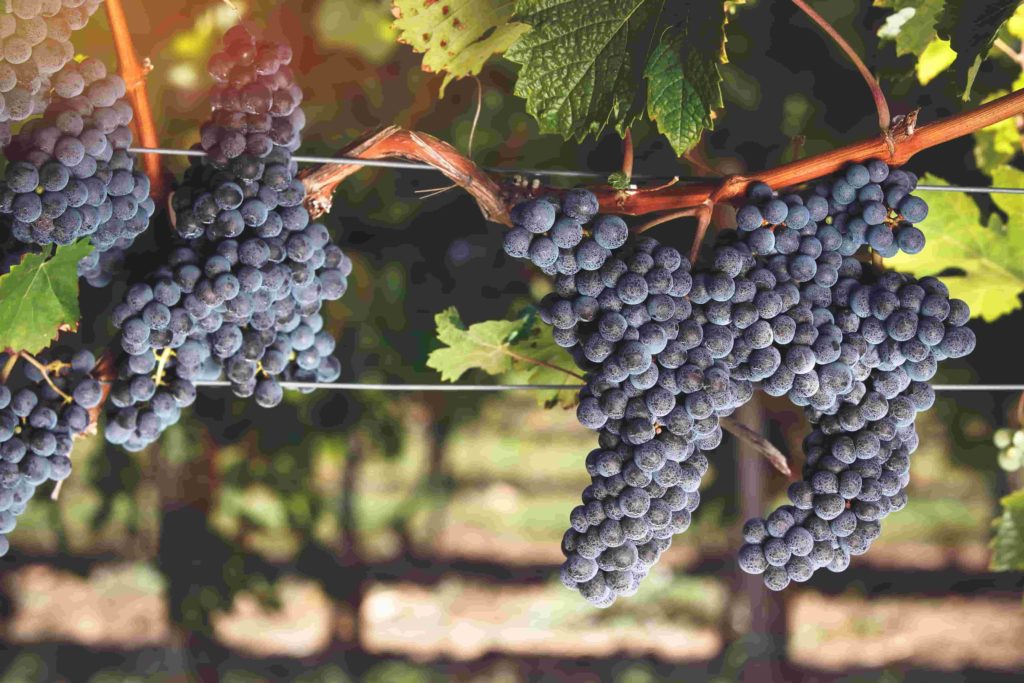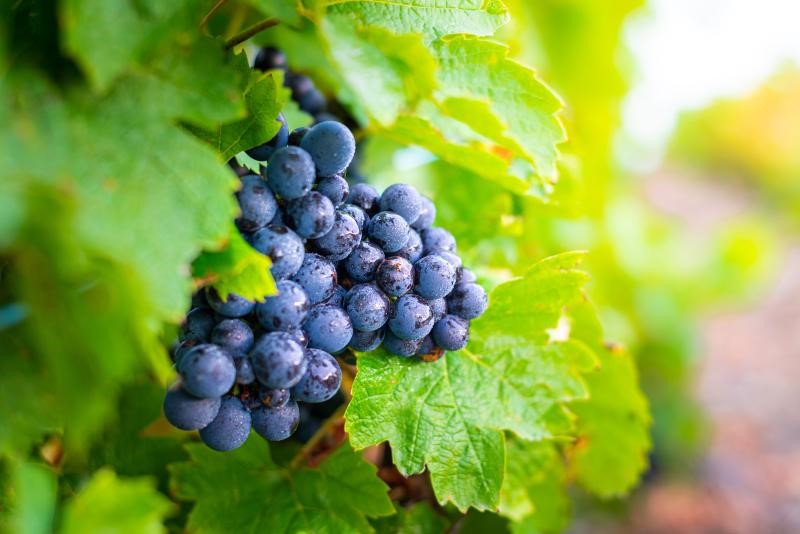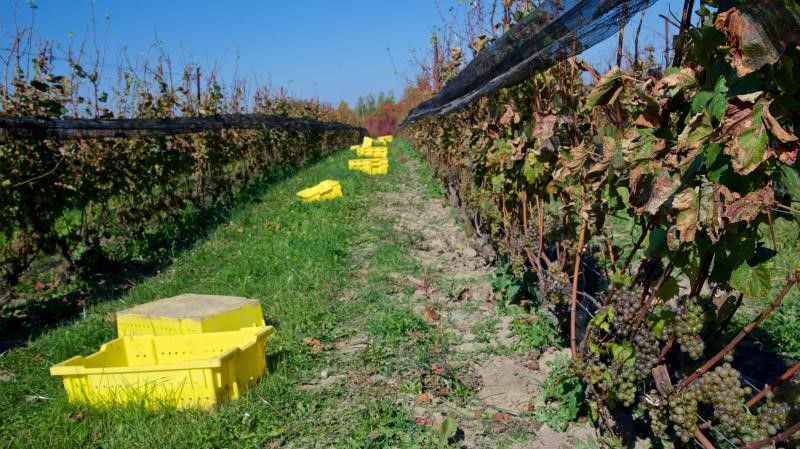
How to choose the right Gamay wine | Guide to red wine

Gamay is strongly associated with the Beaujolais region in eastern France, 50km north of Lyon, but the grape was native to the Burgundy region. These wines have been around for centuries and are known for their fruity tastes. However, Gamay has struggled with its image. The grape is associated with being an overly fruity wine that lacks structure and finesse.
Gamay Noir was extensively planted in the Burgundy region, appreciated for its generous yield and robust nature. Still, after the taste for Gamay diminished, great swathes of vineyards were replaced with a far more superior grape – Pinot Noir. In fact, DNA analysis discovered that the grape was the result of breeding between Pinot Noir and Gouais Blanc. This explains the phenotypic parallels between Pinot Noir and Gamay – high acidity and low tannins.
Gamay wines have gained popularity outside France, Australia, New Zealand and the US. This article will explore what you can expect from Gamay wines and the differences by region. We will also cover Gamay viticulture and how this influences the final product.
Click on a link to jump to that section:
What is Gamay wine like?
Although Gamay didn’t make the cut in Burgundy, it can hold its own in the vineyards of Beaujolais AOC. Like all grape varieties, it produces various wines depending on the soil, vine age, and climate. When planted on fertile terrain, Gamay will often crop at high yields; bunches are packed with large, insipid berries. Conversely, ‘Bas Beaujolais’ clay soils can be too cold to completely ripen Gamay, producing acidic, flat wine.

Like Pinot Noir Gamay is endowed with relatively thin skins, the grapes contain moderate amounts of colouring compounds and relatively low tannin levels. As a result, many young wines are very soft and elegant, light, with a red fruit aroma. On the other hand, old vines planted on the free-draining granite soils of Haut Beaujolais yield a more structured, fleshier, and spicier expression of the grape. The best reds of Beaujolais Cru are rich yet smooth and will improve in bottle for several years. These are the antithesis of the feather-light and fruity’ cliché attached to the Gamay grape; moreover, they’re seldom expensive.
Gamay wine by country
France
The Beaujolais wine region is the spiritual home of Gamay. This region stretches 34 miles from the granite-based hills immediately south of Macon to the flatter terrain northwest of Lyon. It is a vast area, producing almost as much wine as the rest of Burgundy. Beaujolais is a very diverse wine region; the terroir encompasses both calcareous and metamorphic soils. Gamay, like Pinot Noir, is very reflective of its terroir. Bas Beaujolais is known for its clay soils, Morgon for schist (a leading Beaujolais crus) and St-Amour for limestone-rich terroir. Each vineyard site will convey a personality in the wine, ranging from the floral, bright reds of Fleurie to the structured Gamay of Moulin-a-Vent.
The Loire Valley, meanwhile, is associated with very light and pretty Gamay wines. The best examples are made in the vineyards of Touraine, with the beautiful city of Tours as its capital.
Australia
Gamay was first planted in Australia in the mid-1970s; winemaker Len Evans decided to experiment with the variety at this property in Hunter Valley, New South Wales. Yet while the total acreage is dwarfed by Pinot Noir, Gamay is generating a buzz among hipster winemakers and aficionados of lighter, fresher styles. Indeed, Gamay vines can be found in all corners of the Antipodean landscape, including Adelaide Hills in South Australia, Tasmania, the Mornington Peninsula, and Yarra Valley. Today, the most compelling examples are made in the cooler parts of Australia, particularly Victoria. The wines display aromas of ripe cherry, silky tannins, and crisp acidity.
USA
For decades, a grape variety known in California as ‘Napa Gamay’ was misidentified because of its identical features to the Beaujolais article. However, it was discovered that Napa Gamay is actually Valdiguie, a rare grape from the Languedoc. Nevertheless, a few producers in the Golden State produce excellent rich and fruit-driven wines from Gamay Noir. It reaches an apogee in the Sierra Foothills AVA.
In Oregon, over 25 wineries now work with Gamay, inspired by Beaujolais. Their pioneering work in rescuing Gamay’s bruised image – organic farming an integral component – is encouraging younger winemakers to take a chance on this underrated grape variety. Due to the wine region’s cool climate and volcanic soils, the Gamay grape shines in the Willamette Valley. The best wines are delightfully fragrant and fresh.
New Zealand
Only a handful of Gamay wines are being made in New Zealand today (under 10 hectares are cultivated), but almost every bottle is exceptional. Central Otago in the South Island and Hawke’s Bay (south of Auckland) produce the finest examples. Te Mata Gamay Noir can compete with the top crus of Beaujolais, a regal interpretation of the grape, with ripe tannins and lovely crunchy red fruit.
Gamay viticulture & winemaking
Although Gamay is not exactly the height of consumer fashion, it is increasingly popular with growers in Europe and the New World. Highly valued for its ability to maintain good acidity at peak ripeness, Gamay is an adaptable and malleable variety; it will grow in various soils, although it can struggle to ripen in the colder terroirs. Another of Gamay’s attractive features is its vigour and resistance to mould and rot. However, if the winegrower desires quality, judicious pruning is required throughout the season to prevent excessive fruit yields. Vigorous, overcropped Gamay will never yield a wine of any excellence.
A great deal of Beaujolais wine is made using carbonic maceration. This involves filling a fermentation vat with whole bunches and yeast. Fermentation begins internally, and the release of carbon dioxide from within causes the grapes to burst, releasing their juices without adding too much tannin from the skins. Carbonic maceration produces a very fruity and fresh style of Gamay red wine, light in colour and tannin, and unique flavours; in particular, bubblegum and banana.

Wines destined for Beaujolais Nouveau will often be pressed after three days in the carbonic maceration vat; this must is mixed with free-run juice and fermented quickly. It is then racked, fined, filtered, and bottled. However, cru Beaujolais will be handled almost the same way as Pinot Noir: many producers fill the vat with a mixture of whole bunches and crushed grapes. After a longer maceration period, the finest wines are sometimes maturated in wood. Correctly judged, oak adds depth and structure to first-division Gamay, imparting notes of toasted spices and cooked fruit. Too much, however, can overwhelm the fruit.
How do you choose a Gamay wine?
Some experts continue to overlook Beaujolais Nouveau, and sometimes with good reason. However, good Beaujolais Nouveau is a delight to drink. Soft, expressive, and very fruity. Beaujolais (Gamay) benefits from being served slightly chilled. In the warmer months, Gamay Noir is the ideal red variety to enjoy with lighter foods – chicken, salads, salmon, pizza or pasta – due to its light to medium body and crisp acidity. New World expressions tend to offer riper fruit such as black cherry or Mulberry and more alcohol than their French counterparts, but much depends on the vineyard, wine region and winemaking techniques used.
The finest beaujolais crus, meanwhile, could be a good alternative, with regards to perfume and finesse, to the Cote de Beaune Pinot Noir, with a much smaller price tag, of course. It represents one of the greatest bargains of the fine wine world. The wines have the same floral spiciness, freshness and precision as young red Burgundy; age sets these two varieties apart.
FAQs
What is the best food pairing for Gamay?
Light and fruity Gamay works particularly well as an aperitif or with salads, grilled lamb chops, fatty fish, or Italian dishes.
What wine is similar to Gamay?
A young Gamay wine can be reminiscent of young Pinot Noir: fresh and crunchy, with aromas of red fruit. However, the flavours diverge as the wines mature.
Is Gamay wine dry or sweet?
Gamay is usually produced as a dry style – it has high acidity and low sweetness, yet the wines are soft and approachable in their youth.
What is the difference between Gamay and Pinot Noir?
Gamay is a relative of Pinot Noir, and so there is inevitably some crossover in terms of bouquet and flavour. Both grape varieties produce light-bodied red wine; top Pinot Noir will typically age for longer. The best wines of the Cote d’Or are also far more expensive than Beaujolais Crus.
What to read next
How to choose the best Cabernet Sauvignon
How to choose the best Pinot Noir




